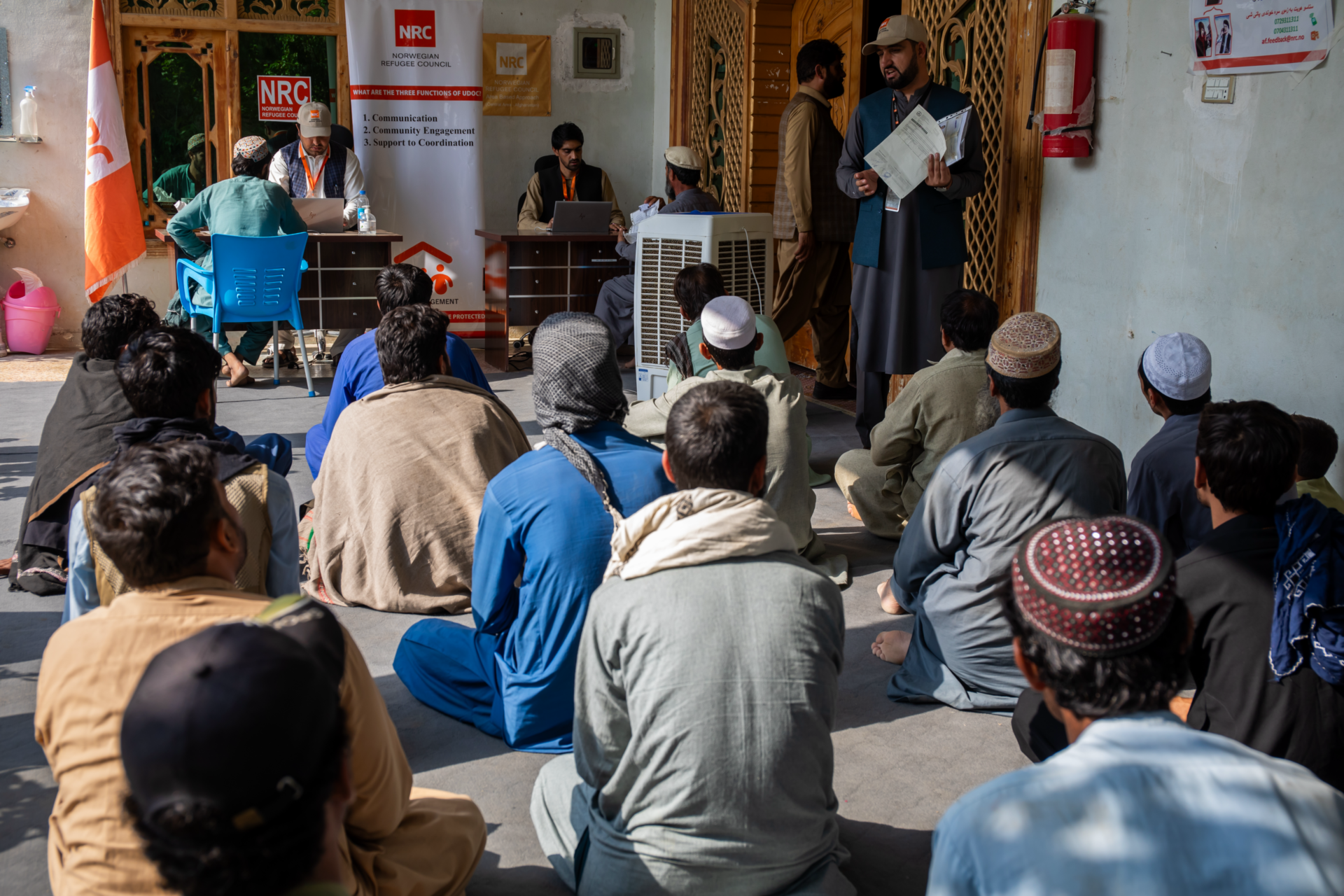
Restoring Hope: Community Centers in Afghanistan
Afghanistan Blog Series
Community centers in Afghanistan are offering a beacon of hope to thousands of Afghans who are trapped in harmful cycles of displacement and hardship. Decades of conflict and economic instability, amplified by the impact of climate change, have devastated Afghanistan and fueled the humanitarian crisis, with over half the population now living in poverty.
Community centers—run by international non-governmental organizations that host local organizations who provide services—provide a space for Afghans to access a breadth of essential services in the absence of development support to the country’s infrastructure. The centers demonstrate that when international and local organizations work together, they can overcome the restrictive operating environment and provide principled assistance to Afghans in need.
Millions of Afghans are struggling to find stable employment and housing. The hundreds of thousands of Afghans who have recently returned from neighboring countries are particularly vulnerable, often losing possessions during grueling journeys and returning with nowhere to live and no jobs to support them. They join the 5.7 million Afghans who remain internally displaced from conflict, climate change, or the economic crisis, with many finding temporary shelter in informal settlements but living with the constant threat of eviction.
Despite the overwhelming needs, community centers run by non-governmental organizations are creating hubs for displaced Afghans and host communities to access a range of services to meet their needs and build resilience. Situated in locations with a large internally displaced population, four centers run by the Norwegian Refugee Council have supported over 3,700 individuals between March and May of 2024, according to internal data. The centers provide havens for internally displaced people, recent returnees, and the host community to gain vital information and securely access services, and play a crucial role in identifying community needs and referring visitors to relevant external services.
Visitors can access a range of complimentary services, such as individual advice, health treatment, food, and hygiene kits, as the centers function as a hub for diverse organizations. As high levels of unemployment and household debt drive food insecurity across the country, 82% of visitors across the four community centers in different provinces are requesting food assistance. Skills-based training and employment support is provided in some centers to help communities find longer term solutions to the main drivers of their needs. Information provision and one-to one counseling is available on how to access Afghan identity documents, known as the Tazkira. Such documentation is vital to unlock people’s access to public services including registering land, employment in the public sector, obtaining birth and marriage certificates, and registering mobile SIM cards. Community committees are hosted in the centers, allowing visitors an opportunity to share feedback and co-design the support they receive.
The Funding Situation
Community centers provide a lifeline to those who are welcomed through their doors, but with only 25% of required humanitarian funds received, hundreds of people each week are turned away as the centers reach capacity. Afghanistan received $88.3 million in international development financing between 2002 and 2021, amounting to 40% of the country’s gross domestic product—funding that almost entirely ceased after the Taliban takeover. Following such dramatic reductions in development funding and assistance, humanitarian organizations find themselves struggling to break endless cycles of poverty and displacement and to fill gaps left by development actors that previously provided essential services.
With sustained donor investment, community centers demonstrate a way to assist people holistically, meeting their immediate needs and equipping them with capacity for the future. Services provided directly respond to the needs raised by visitors and community committees and invest directly in communities. These centers have the potential to organically develop, adapt, and expand to meet people’s shifting needs by providing new services and including organizations with different expertise. In the future, they can be passed on to local organizations and further compliment other service providers.
Humanitarian organizations cannot be left to address the long-term needs of the country endlessly. It is critical that donors strategically plan and support the return of development assistance and provide longer-term funding so humanitarian organizations can focus on supporting the most vulnerable and marginalized people. Donors must take pragmatic approaches to Afghanistan that include humanitarian and diplomatic engagements with the de-facto authorities to protect organizations’ ability to access people in need and provide aid safely and effectively. Without this, Afghans could be left suffering for years to come.









